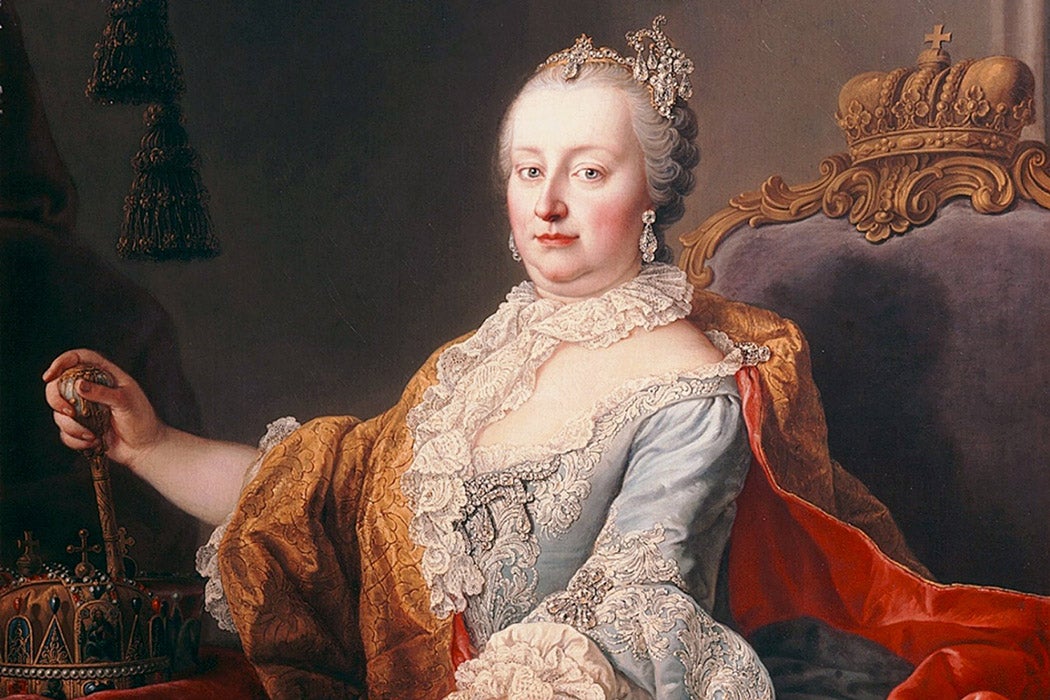As “kings” go, Maria Theresa (who lived from 1717-1780 and was crowned sovereign of the Austro-Hungarian empire in 1741) was a pretty good one. The path to her coronation was not easy—continental European states of the time did not recognize women as rulers. Maria Theresa’s father spent decades trying to ensure she would inherit the Habsburg possessions. But when he died in 1740, Saxony, France, Prussia, and Bavaria all piled on to prevent Maria Theresa from taking the title and to carve themselves out a piece of the sprawling Habsburg inheritance.
The resulting War of Austrian Succession lasted from 1740-1748. Archduchess Maria Theresa Walburga Amalia Christina survived and thrived. According to Pieter M. Judson’s major new history, she would rule for forty years, and key to her legitimacy was being crowned “King of Hungary” in 1741. (Queens were spouses of sovereigns, not actual sovereigns, hence her unofficial title of “king.”) Her coronation marked the formation of that hodgepodge state—called variously over time Austria-Hungary, the Austro-Hungarian Empire, the Habsburg Empire, and the Dual Monarchy—which lasted until its dissolution one century ago in October of 1918.
What Judson calls her “accidental empire” originally stretched from the Austrian Netherlands to Transylvania. It spanned from Naples, Milan, and Venice in the south to Bohemia in the north. Many peoples, religions, and more than a dozen languages were packed into the state.
In the war over her succession, Maria Theresa lost Silesia to the Prussians. Afterwards, however, she consolidated a major European empire, driven by what historian William J. McGill calls the “central assumption of her politics: the absolute conviction that God had called her to rule and the equally firm belief that she ruled for the benefit of her people.”
There was some basis for this belief. The vast majority of “her people” were peasants. Many viewed her as their protector against their local elites. These elites might very well have been of same ethnic background as the peasants, but they were an entirely different class. Since many peasants were subject to the system of unpaid compulsory labor called Robot—the word comes from the Czech robota, meaning forced labor—they resented local nobles infinitely more than a distant one, especially one who actually did move towards making their lives slightly better.
Want more stories like this one?
McGill notes that traditionally Maria Theresa has been thought of as a conservative place-holder of little import, not an innovator like the great centralizing state-builders of the era. After all, Catherine of Russia and Frederick II of Prussia both earned the epithet “Great.” Maria Theresa did not. McGill begs to differ, as have historians who followed him, many with access to Central European archives that had been closed or highly restricted during the Cold War. “Theresian” social, administrative, fiscal, and religious reforms all opened up the way for the greater and wider-ranging reforms of her son Joseph II in education, censorship, and religious toleration.
McGill describes Maria Theresa as a pragmatic, conservative reformer, definitely not a revolutionary. “She considered, on occasion sponsored, reforms which departed radically from previous practice—yet she had no desire to transform society.”






